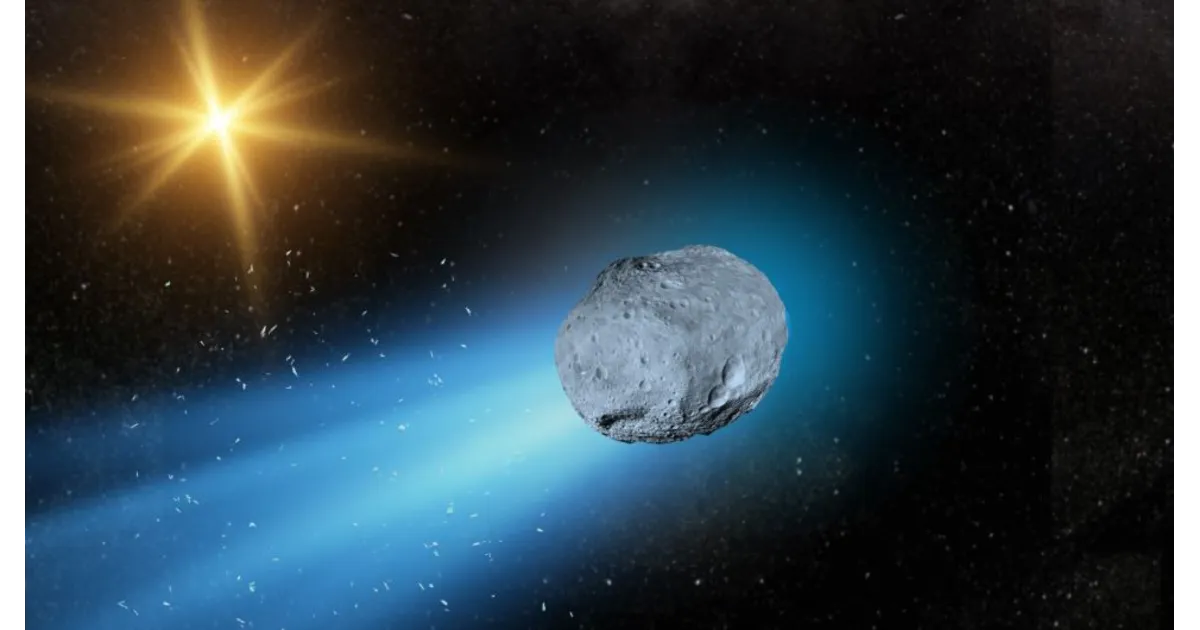
A Possible Glimpse of a Celestial Traveler Beyond Our Solar System
A recently circulated image allegedly released by Japan’s space agency has ignited vibrant discussions among astronomers and space enthusiasts worldwide. The image, said to depict the interstellar comet 3I/ATLAS, was reportedly created using spectral and imaging data. Although official confirmation is still pending, the release has reignited fascination with this rare cosmic wanderer—its origins, movement, and visibility from Earth. Recognized by both NASA and the European Space Agency (ESA) as an interstellar comet, 3I/ATLAS continues to capture scientific and public attention as one of the most intriguing celestial visitors of 2025.
Global Buzz Over the 3I/ATLAS Image
Viral Post Claims Authentic Visual of the Interstellar Comet
A viral post on social media platform X (formerly Twitter) claimed that Japan’s space agency released the most realistic image of 3I/ATLAS to date. The post, featuring the caption “Japanese space agency releases possible image of 3I/ATLAS based on imagery and spectrum analysis”, quickly spread across platforms, sparking curiosity and debate.
While officials have yet to confirm the image’s authenticity, the visual has renewed global interest in this mysterious comet journeying through our solar neighborhood for the first and only time.
The Discovery of 3I/ATLAS
Third Interstellar Visitor After ‘Oumuamua and Borisov
Comet 3I/ATLAS was discovered on July 1, 2025, by NASA’s Asteroid Terrestrial-impact Last Alert System (ATLAS) telescope in Rio Hurtado, Chile. According to NASA’s Center for Near-Earth Object Studies (CNEOS), its orbital trajectory extends beyond the bounds of our solar system, confirming its interstellar nature.
It is officially classified as the third known interstellar object, following 1I/ʻOumuamua (2017) and 2I/Borisov (2019). In its name, the “I” stands for interstellar, while the numeral “3” denotes its sequence of discovery.
Origin and Interstellar Journey
A Messenger from Distant Star Systems
NASA scientists affirm that 3I/ATLAS follows a hyperbolic orbit, a trajectory that ensures it will not return once it departs the solar system. This unique path confirms its extraterrestrial origin—a visitor from another star system.
ESA refers to such bodies as “cosmic outsiders,” suggesting they carry ancient material and evidence from worlds beyond our own. While every known planet, moon, and comet in our system formed from the same primordial nebula, objects like 3I/ATLAS offer direct clues about environments shaped around other suns.
Speed, Path, and Visibility
How and When to Observe the Comet
Currently, 3I/ATLAS is speeding through space at over 210,000 kilometers per hour, far too fast to be captured by the Sun’s gravity. After reaching its closest point to the Sun on October 30, 2025, it is now receding into the outer solar system but remains within observational range.
Skywatchers can begin spotting it from early November, low on the eastern horizon before dawn. Although it won’t be visible to the naked eye, it can be observed through a medium-sized telescope. During November and December 2025, it will grace the morning sky, making its closest approach to Earth at roughly 1.8 astronomical units—around 270 million kilometers away.
Scientific Significance
What 3I/ATLAS Teaches Us About the Universe
The alleged image of 3I/ATLAS has renewed scientific enthusiasm for studying its composition and origin. Researchers believe the comet may contain carbon dioxide, ice, and other frozen compounds formed in the frigid environments of distant stellar systems.
Studying this object allows scientists to better understand the formation of planets, comets, and other celestial bodies in alien star systems. Since NASA has confirmed that 3I/ATLAS poses no threat to Earth, it provides a rare opportunity to examine interstellar material without risk.
Observation Tips for Astronomy Enthusiasts
How to Catch a Glimpse of the Interstellar Visitor
For those eager to witness 3I/ATLAS, use a medium to large telescope in a dark, low-light area. Look toward the eastern sky before sunrise, particularly between November and December 2025.
Amateur astronomers can also join local observatories or astronomy clubs to share equipment, coordinate viewing times, and compare observational data. This may be a once-in-a-lifetime opportunity to observe a traveler from another star system.
Frequently Asked Questions (FAQs)
Q1. What is the 3I/ATLAS image released by Japan’s space agency?
It is a possible visual representation of the interstellar comet 3I/ATLAS, reportedly created using imaging and spectrum data, though official verification is still awaited.
Q2. Why is comet 3I/ATLAS significant to scientists?
3I/ATLAS helps researchers study matter originating beyond our solar system, offering clues to how celestial bodies form and evolve across the universe.




